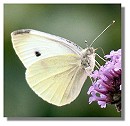
Butterflies of Scotland
- Small Tortoiseshell (Aglais urticae)


The adult Small Tortoiseshell is striking, with its dark body and orange and black wings which have a row of blue dots around the rear edge. A white spot in forewing separates it from the larger and much rarer Large Tortoiseshell. However, the underwings are dull, which helps to conceal stationary or hibernating individuals. When threatened, resting individuals rapidly open their wings, presenting the dramatic display of colours. This can frighten away young or inexperienced birds. It is fast flying in bright sunshine but can be easily approached when feeding. The Small Tortoiseshell is found in most of temperate Europe and is abundant in most areas of the United Kingdom, including Scotland, but numbers vary each year. It also hibernates during the winter and so is usually one of the first butterflies to be seen in the spring along with other regular hibernators, Red Admiral, Peacock, Comma and Brimstone.
Its larvae feed on Common Stinging Nettle, usually in large numbers with young larvae living close together sheltered within a protective silken web. As the larvae reach the final stages of development, they become more independent.Recent years have seen a rapid decline in numbers of Small Tortoiseshell numbers across Britain. The primary reason for this decline is thought to be due to the expanding range of a tachinid parasitoid fly called Sturmia bella which was first recorded in Britain in 1999. The adult fly (Sturmia bella) also lays its eggs on the surface of Common Nettle leaves.
The Small Tortoiseshell can be found in a wide variety of habitats and regularly occurs in gardens feeding on Buddleia. It can also be found on disused railways and railway embankments rough ground and anywhere where the larval foodplant Common Nettle is present.
Return to the Butterfly Index
or go to the next Butterfly:  Small White.
Small White.
Where else would you like to go in Scotland?

